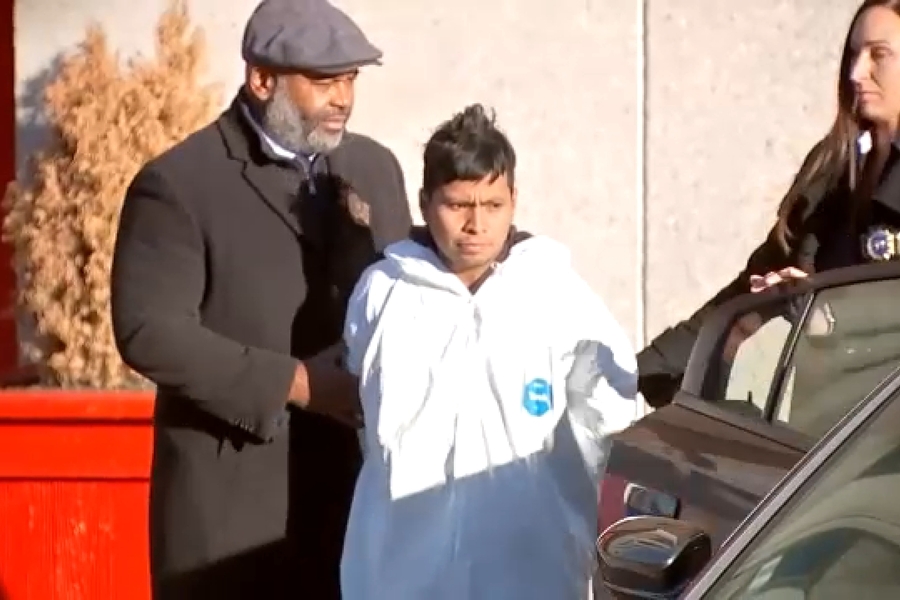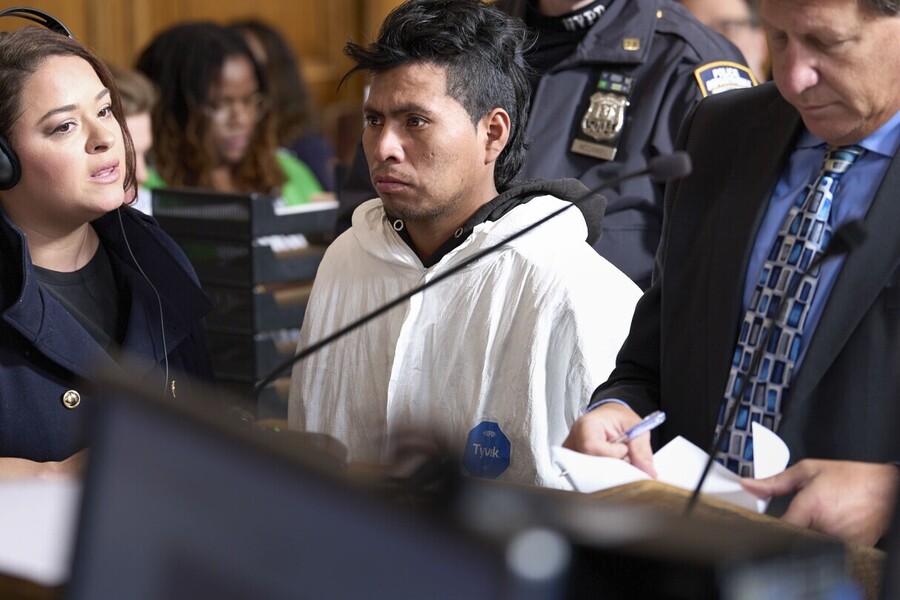A shocking and deeply unsettling tragedy unfolded on a New York City subway platform on Sunday morning when a woman was set aflame and burned to death. Video footage of the horrific incident has sparked widespread criticism of the NYPD, as officers appear to stand by as the victim succumbs to the flames. The gruesome event has ignited debates about law enforcement’s role during such crises and drawn attention to the suspect, a Guatemalan man in the country illegally, who was arrested hours later.
The video, which has since circulated widely on social media, captures the harrowing scene on the Brooklyn subway platform. A man, identified as 33-year-old Sebastian Zapeta, is seen sitting on a bench near the burning woman. In the footage, he appears disturbingly calm, even fanning his jacket at her as the flames engulf her body. Witnesses watched in horror as the flames grew, prompting frantic calls for help.
Zapata, who authorities later revealed is undocumented and living in a Brooklyn homeless shelter, was arrested at a different subway station in midtown Manhattan. Police say his capture was made possible through surveillance footage, police body camera images, and the help of three high school students who identified him and alerted authorities.
The victim, whose identity remains unknown as of Tuesday evening, was pronounced dead at the scene despite efforts to extinguish the flames. The incident has left the city shaken and questioning how such a tragedy could have occurred in broad daylight with law enforcement present.

In response to public outrage, the NYPD has defended the actions of its officers, explaining their efforts to control the chaotic scene and procure fire extinguishers and assistance from Metropolitan Transit Authority (MTA) workers. NYPD Chief of Transit Joseph Gulotta stated that the officer visible in the footage was focused on securing the crime scene while colleagues sought the necessary equipment to combat the fire. “I think he did his job perfectly,” Gulotta told reporters on Sunday. “As his fellow officers went and got MTA workers, got fire extinguishers, and eventually were able to extinguish the individual.”
However, the footage has left many unconvinced, sparking fierce criticism of the officers’ perceived inaction during a life-or-death situation. Social media erupted with calls for accountability, with many questioning why the flames were not extinguished more quickly and whether the response was adequate given the severity of the incident.
Law enforcement officials have also highlighted the importance of surveillance and body camera footage in tracking down the suspect. After the fire was extinguished, authorities worked quickly to identify Zapeta. Immigrations and Customs Enforcement (ICE) confirmed that Zapeta had previously been deported but reentered the U.S. illegally. His presence in the country and involvement in such a heinous act have fueled discussions about immigration policies and enforcement.
Three high school students played a pivotal role in bringing Zapeta to justice. The teenagers identified him at another subway station and promptly notified the police. Their courage and swift action have been praised, with NYPD Chief Jessica Tisch commending their efforts. Zapata was taken into custody shortly afterward and has since been charged with murder and arson, according to court records.
On Tuesday, Zapeta appeared in a Brooklyn courtroom for his arraignment, where Judge Jung Park ordered that he remain in custody. Charged with three felonies, including murder and arson, Zapeta faces the possibility of life in prison if convicted. His next court appearance is scheduled for Friday, where he is expected to enter a plea.

The incident has reignited debates over public safety in New York City’s transit system and the adequacy of police presence on subway platforms. Critics argue that the NYPD’s response, as depicted in the footage, highlights systemic issues in emergency preparedness and crisis intervention. Others have pointed to the broader challenges facing the city’s transit system, including homelessness, mental health crises, and violent crime.
NYPD officials have stood by their officers, emphasizing the chaotic nature of the scene and the steps taken to address the emergency. “This was a tragic event, and our officers responded as quickly as they could given the circumstances,” a spokesperson said in a statement. “Our thoughts are with the victim’s family and loved ones.”
The case has also drawn attention to the role of bystanders and the power of community vigilance. The actions of the three high school students who identified Zapeta were instrumental in his capture, showcasing how ordinary citizens can make a difference in bringing perpetrators to justice.
As the investigation continues, questions remain about the motive behind the attack and the events leading up to the tragedy. Authorities have not released details about Zapeta’s relationship, if any, with the victim or what may have prompted the act of violence.
The shocking nature of the crime and its aftermath have left New Yorkers grappling with a sense of unease and outrage. Subway riders expressed safety concerns and questioned how such an incident could occur in one of the city’s busiest transit hubs. “It’s terrifying to think this could happen to anyone,” one commuter said. “We need to feel safe when we’re traveling.”
The tragedy also serves as a stark reminder of the importance of addressing broader societal issues, such as homelessness and mental health, which often intersect with public safety concerns. Advocates have called for increased resources and support for vulnerable populations, arguing that prevention and intervention are key to reducing incidents of violence and tragedy.
As the city mourns the loss of the victim, efforts are underway to ensure that justice is served and that steps are taken to prevent similar tragedies in the future. The legal proceedings against Zapeta will undoubtedly be closely watched, as will any reforms or measures introduced to address the concerns raised by this devastating incident.
For now, the subway platform where the tragedy unfolded serves as a somber reminder of the fragility of life and the urgency of creating a safer, more compassionate society. As New York City moves forward, the hope is that lessons learned from this horrific event will lead to meaningful change and greater accountability for all involved.

